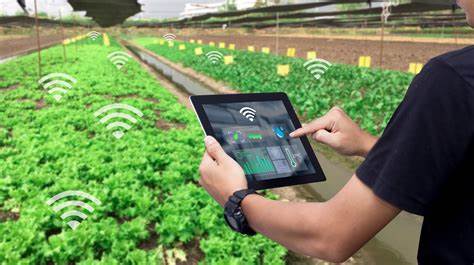
High-Tech Innovations in Vertical Farming: Revolutionizing Agriculture for a Sustainable Future
Introduction
The agricultural sector has experienced significant advancements with the introduction of high-tech innovations, and vertical farming is no exception. In this article, we will explore the definition of high-tech innovations in vertical farming and their relevance and importance in modern agriculture.
Historical Background
Over the years, vertical farming has undergone significant developments. We will delve into the origins of vertical farming and examine how high-tech innovations have contributed to more efficient and sustainable farming practices.
Key Concepts and Definitions
Vertical farming involves growing crops in vertically stacked layers using advanced technologies to create optimal growing conditions. We will discuss the principles of vertical farming and highlight its numerous benefits over traditional farming methods.
High-tech innovations play a crucial role in enhancing the efficiency and productivity of vertical farming. We will define high-tech innovations and provide examples of their implementation in vertical farming. Additionally, we will explore the importance of these innovations in maximizing yields and minimizing resource usage.
Main Discussion Points
Automation and robotics have transformed vertical farming by enabling tasks such as planting, harvesting, and maintenance to be performed by robots. We will discuss the use of robots in vertical farming and examine the benefits they bring, as well as the challenges associated with automating farming processes.
Artificial intelligence (AI) and data analytics have revolutionized plant growth optimization in vertical farming. We will explore the role of AI and data analytics in maximizing crop yield and quality. Furthermore, we will provide examples of AI applications in vertical farming, showcasing their potential to revolutionize the industry.
IoT and sensor technologies play a crucial role in monitoring and optimizing environmental conditions in vertical farms. We will discuss the use of sensors for monitoring parameters such as temperature, humidity, and nutrient levels. Additionally, we will highlight the integration of IoT for real-time data collection and analysis, enabling farmers to make data-driven decisions.
Case Studies or Examples
AeroFarms serves as a prime example of how vertical farming and high-tech innovations can be combined to create a sustainable and efficient farming system. We will explore the innovative practices implemented by AeroFarms and discuss their impact on the industry.
Plenty is another notable company that has successfully implemented AI and robotics in vertical farming. We will examine how Plenty’s use of AI and robotics has resulted in increased efficiency and sustainability in their farming operations.
Sky Greens has pioneered vertical farming with sustainable practices. We will delve into their approach to vertical farming and discuss how they have successfully integrated high-tech innovations into their farming processes.
Current Trends or Developments
Advances in LED lighting technology have revolutionized plant growth in vertical farms. We will explore the latest developments in LED lighting and discuss how it is being used to optimize plant growth and reduce energy consumption.
Integration of machine learning algorithms is enabling early detection of plant diseases in vertical farms. We will discuss how machine learning algorithms are being utilized to monitor plant health and detect diseases, ultimately leading to more effective disease management.
Research is underway to explore the use of drones for crop monitoring and maintenance in vertical farming. We will discuss the potential benefits and challenges associated with using drones in vertical farms and highlight the ongoing research in this area.
Challenges or Controversies
High-tech vertical farms consume a significant amount of energy, raising concerns about their sustainability. We will explore the energy consumption challenges faced by high-tech vertical farms and discuss potential solutions to make them more sustainable.
The cost implications and scalability of high-tech vertical farming systems are areas of concern. We will discuss the financial considerations associated with implementing high-tech innovations in vertical farming and explore the scalability challenges faced by vertical farming systems.
The nutritional quality of vertically farmed produce has been a topic of debate. We will examine the arguments surrounding the nutritional value of vertically farmed crops and discuss the potential impact on consumer perception and acceptance.
Future Outlook
Vertical farms have the potential to significantly increase food production and address food security challenges. We will discuss how vertical farming can contribute to a more sustainable and secure food system by utilizing high-tech innovations.
The adoption of high-tech innovations in vertical farming on a larger scale is crucial for the industry’s growth. We will explore the barriers to widespread adoption and discuss potential strategies to overcome them.
The exploration of new technologies and collaborations will further enhance the efficiency of vertical farming. We will discuss the importance of ongoing research and development in the field of high-tech innovations in vertical farming.
Conclusion
In conclusion, high-tech innovations have transformed vertical farming, making it more efficient, sustainable, and productive. We have explored the main discussion points, case studies, current trends, challenges, and future outlook of high-tech innovations in vertical farming, emphasizing their significance in shaping the future of agriculture.
References
To further explore the topic, we recommend referring to books, journals, and academic papers on vertical farming and high-tech innovations. Additionally, reputable websites and articles covering the topic, as well as industry reports and case studies, provide valuable insights into successful implementations of high-tech innovations in vertical farming.